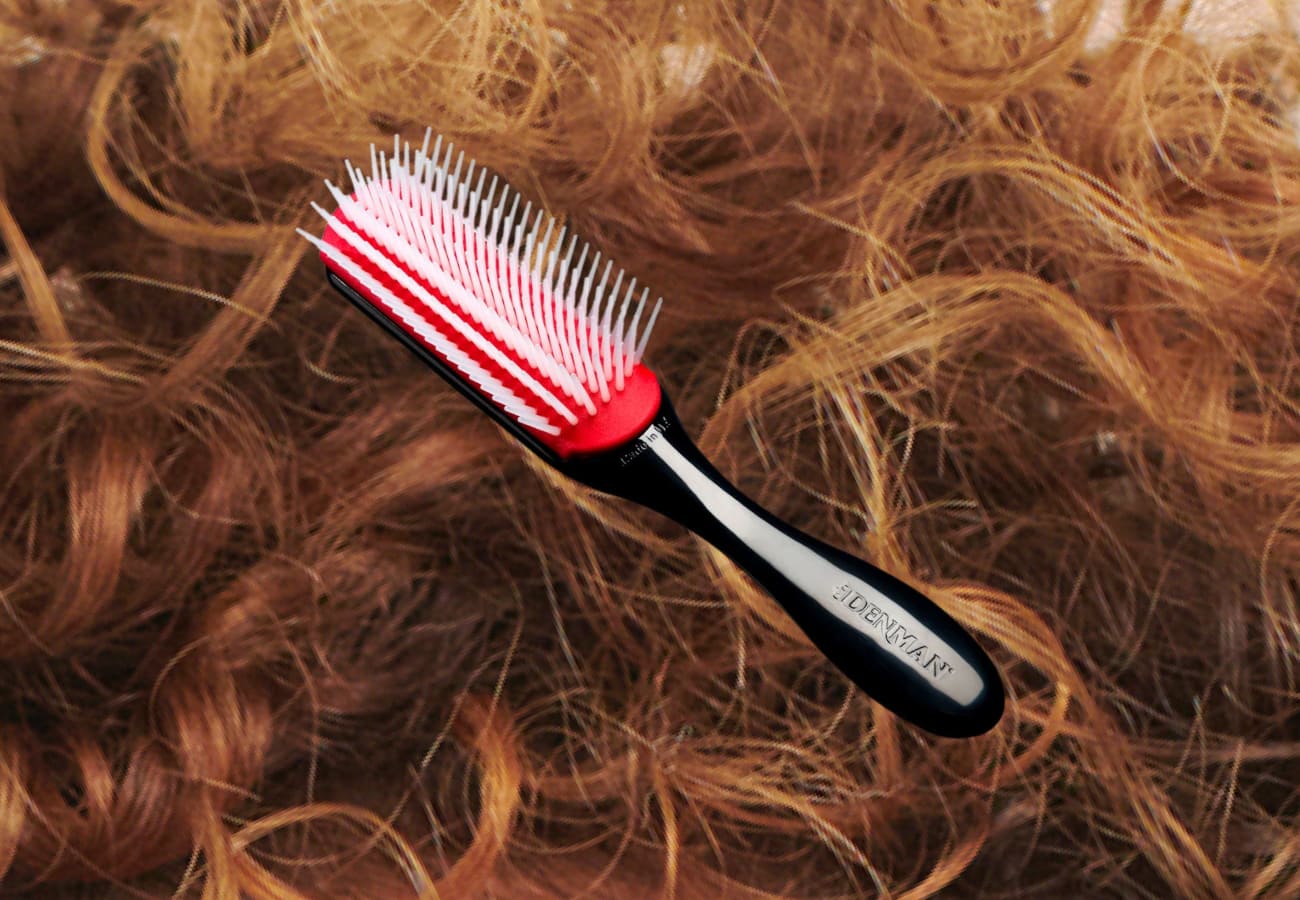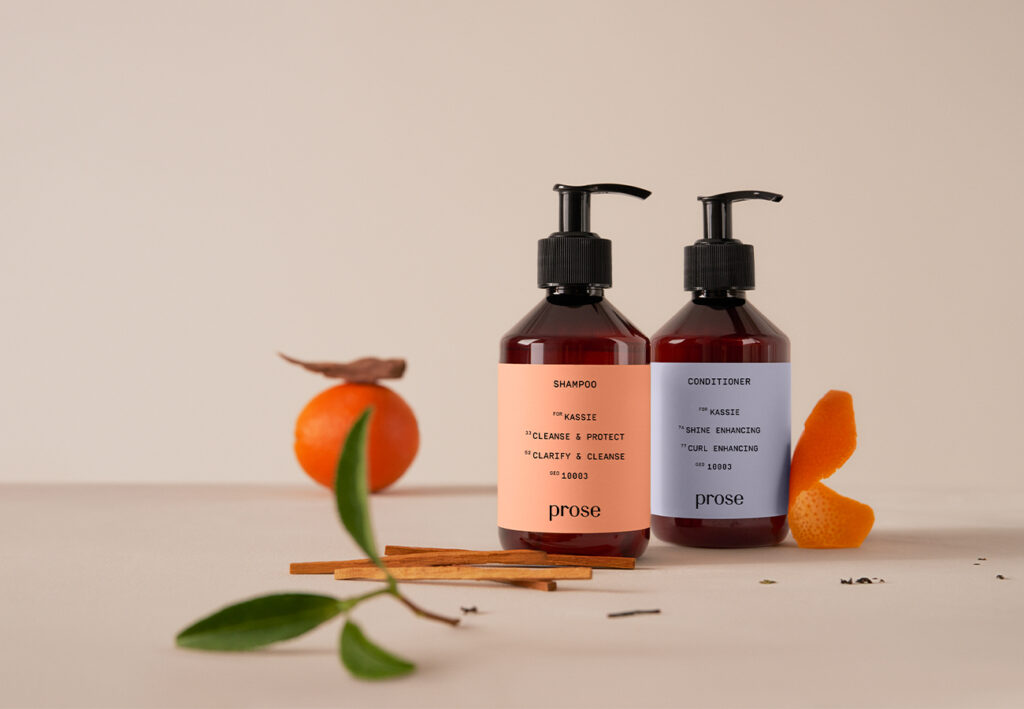If The Curly Girl Method has been your chosen method since you’ve embraced your curls, you may feel conflicted about using a tool as the method coined by Lorianne Massey is all about using your fingers to gently detangle and style your curls—and never combs or brushes. But there are hundreds of videos on YouTube with millions of views from everyday curlies sharing how they use the Denman brush to achieve defined curls. So no matter what method you select, we want to share a few tips on how to use the Denman brush for curly hair without causing breakage or snapping your gorgeous, one-of-a-kind curls.
What is a Denman brush?
If you’ve ever been to a hair salon, you’re familiar with the red and black rubber brush with white bristles. The Denman brush was designed by John Denman Dean in the late 1930s and by the late 1950s was a salon staple. Today, the affection of this hair tool still runs deep, and now curlies everywhere are using the brush to create beautiful curls. You may be wondering how one brush can be used on hair types that range from straight to coily. Well, remember those bristles we mentioned? The differences in the width of each design are what make the brush so versatile. More on that later.
How do you use a Denman brush?
We talked a little about the no tools method, which is all about finger detangling and coiling. However, we’re always about doing what’s best for you and your hair needs. For example, with curly and coily hair types, using combs and brushes on dry hair can do more harm than good and cause unwanted breakage. So, in this case, it’s all about the slip. However, if you’re sure to use a brush that is custom made for detangling curly hair, like the Prose tipped-metal bristle brush you won’t have to worry about damaging your curly hair.
Now the slip needed for a finger detangling session versus the use of a brush could look a little different—meaning a product switch-up might be necessary. But, we know that creams work well with the Deman brush (think: leave-in conditioners and curl creams). Oh, and one essential you’ll always need is water, so keep a continuous spray bottle on hand as you work your way through your hair.
Along with water, there is one more must-have. In addition to your products you’ll need patience. We’ve all been in a rush to get our hair done, however, detangling and styling with a brush without moving through small sections in hair will likely result in—you guessed it—breakage. The more dense or tight your curl, the smaller area you should work with, moving slowly from root to tip.
But there is a little trick you need to remember as you move the brush through each section: turn the brush’s bristles upward. Then, once you work from the roots down the length of your hair, turn the brush under like you would a curling iron. Lastly, scrunch the hair up.
Is there more than one style of Denman brush?
The innovative fact about the Denman brush is you can select options with different bristles or pins, as they’re often called. For curly hair, Ghanima Abdullah, hair expert and cosmetologist for the digital magazine The Right Hairstyles, recommends the D31 brush, a Denman brush with seven rows. “Tight coils generally work well with the D31,” she shares. “It has seven rows to create tight curls, but the bristles are set far apart.” And for wavy hair types, the D3 option is her top pick. However, if you still find selecting the correct brush overwhelming, our expert suggests thinking about it like this: “The more rows, the tighter curls you’ll have in the end.”
Additionally, if your brush needs some tweaking, Abdullah left us with a pro tip: remove rows. “There are many different types of Denman brushes,” she explains. “They vary in the amount of rows and bristles they have. While you can’t remove the bristles, you can remove rows if you didn’t make the ideal choice and your hair doesn’t glide through the brush.”
Wrap up
Using a Denman brush for curly hair takes finesse and patience, but is well worth it as the technique results in defined curls and coils. To amp up your results, use custom haircare that is tailored to your hair goals and needs, definition included if you desire. Get started today on your Prose consultation here.





